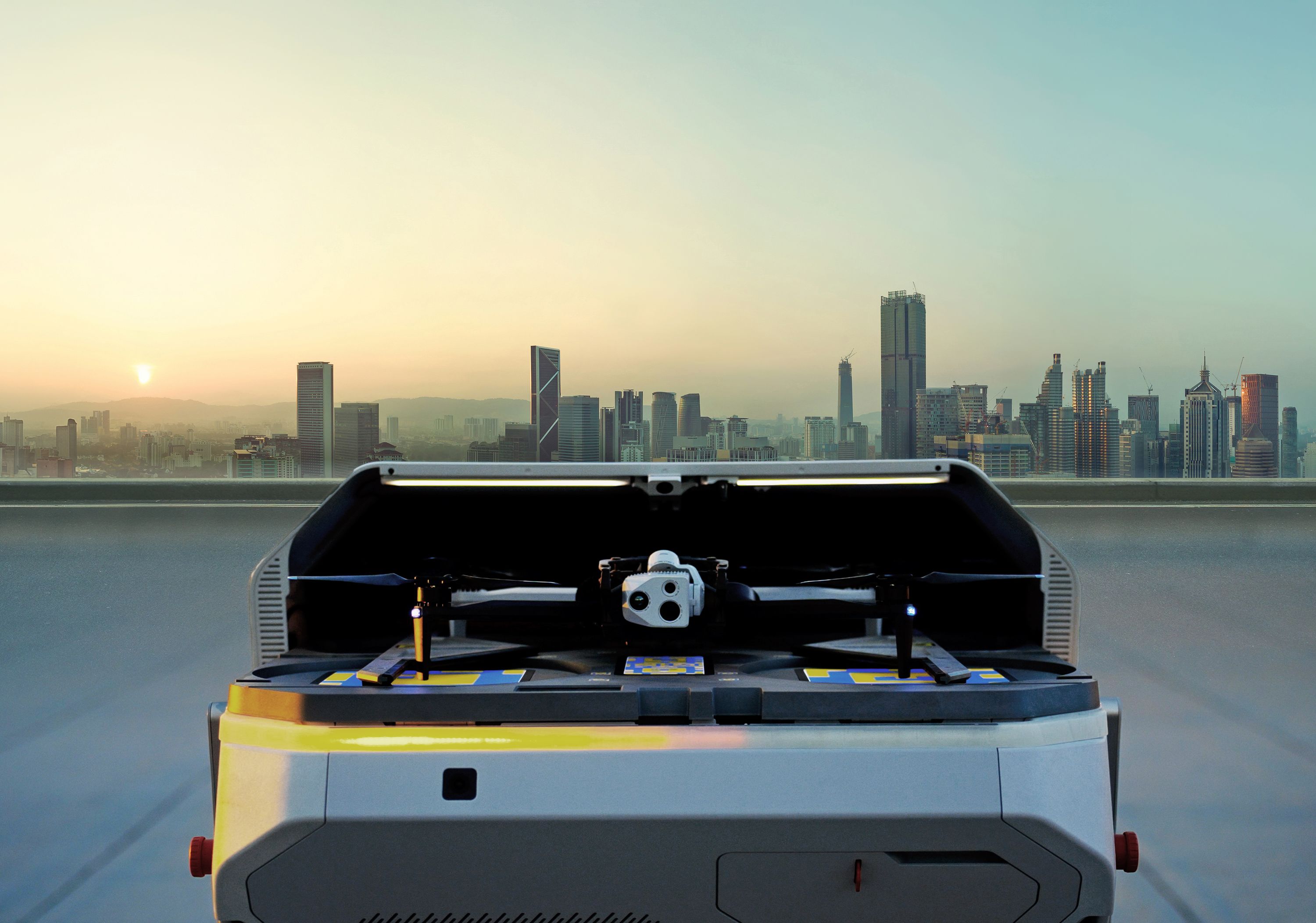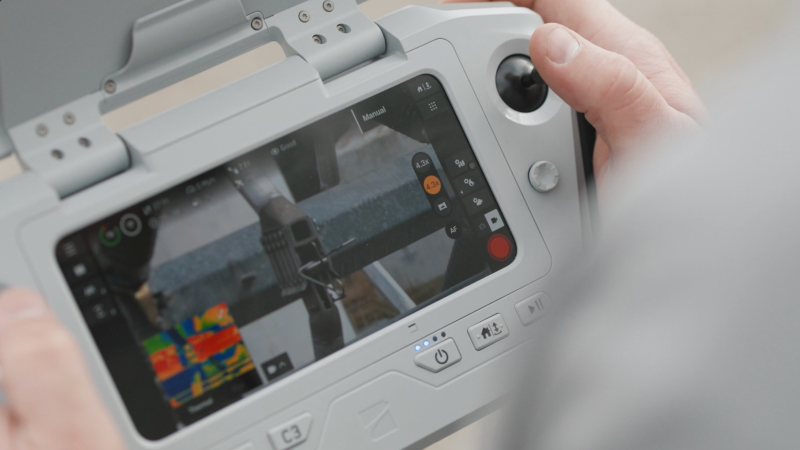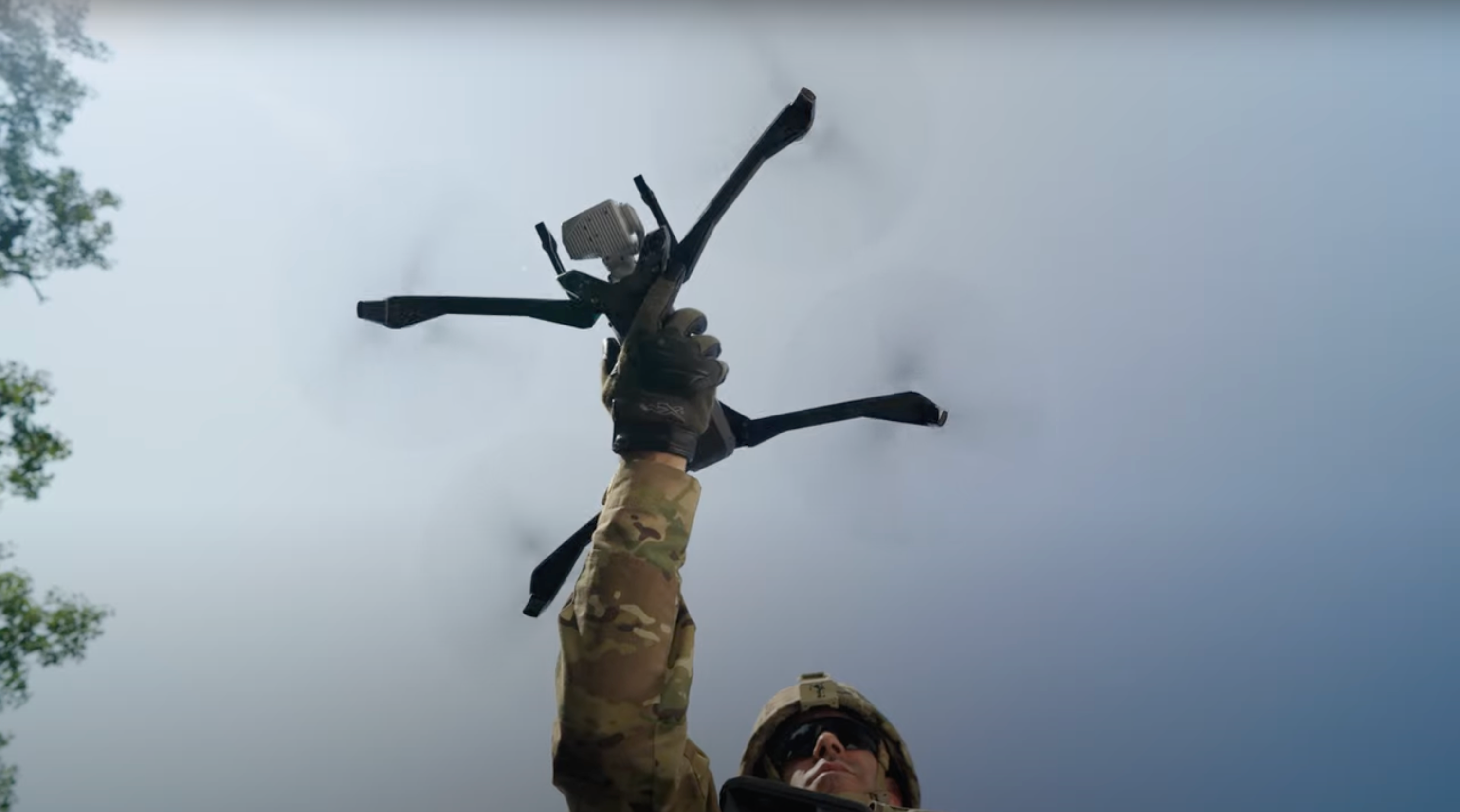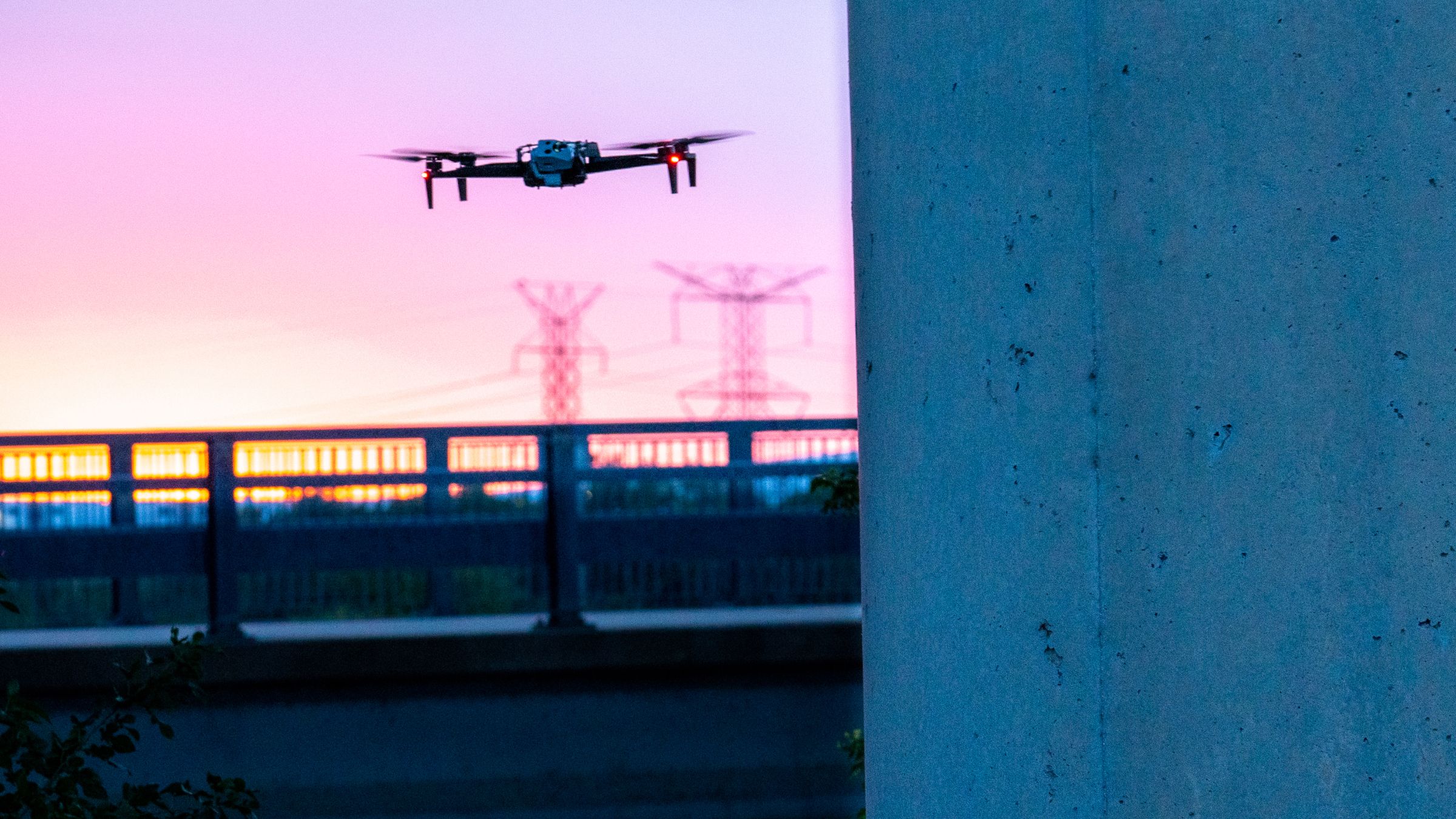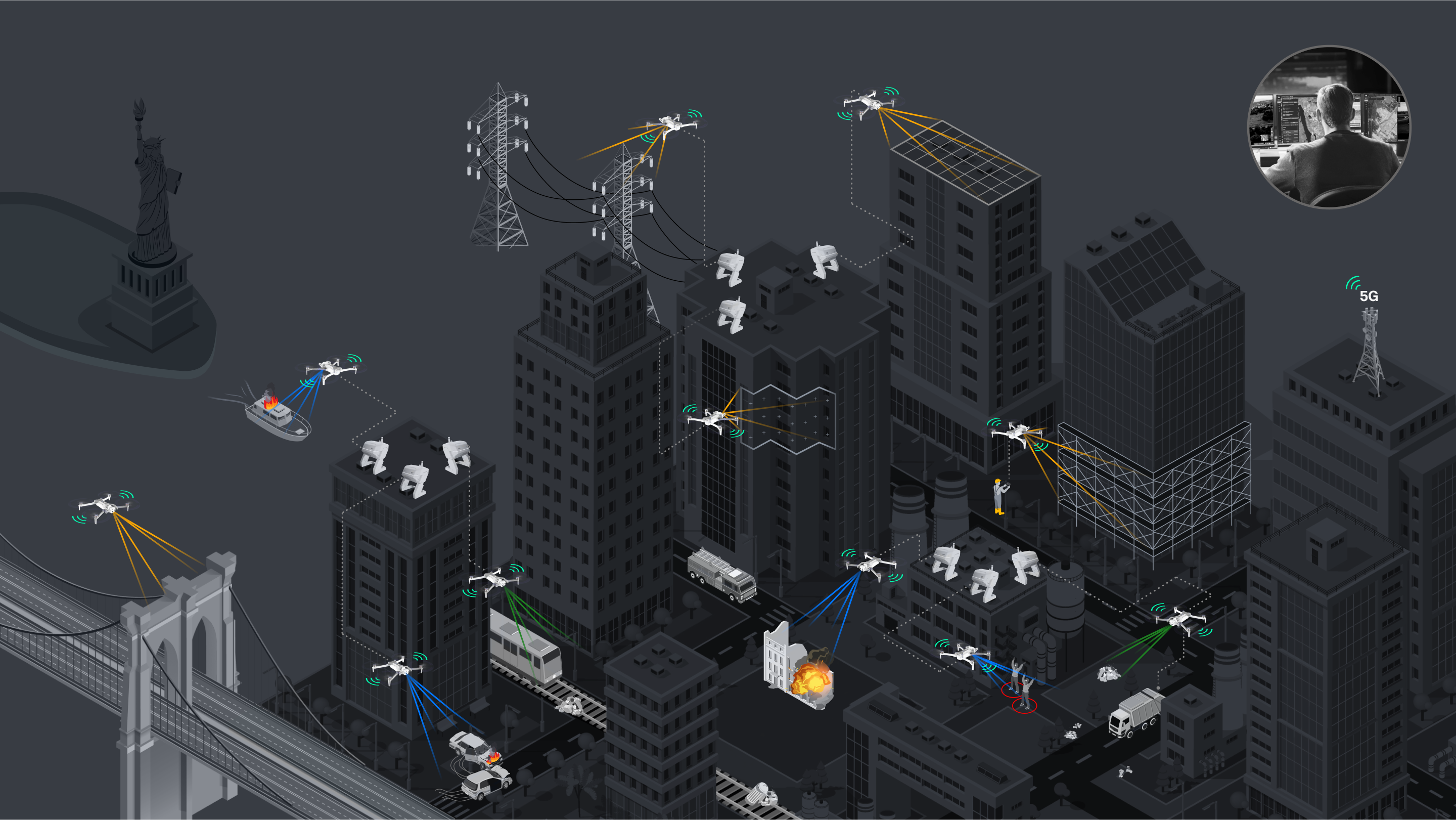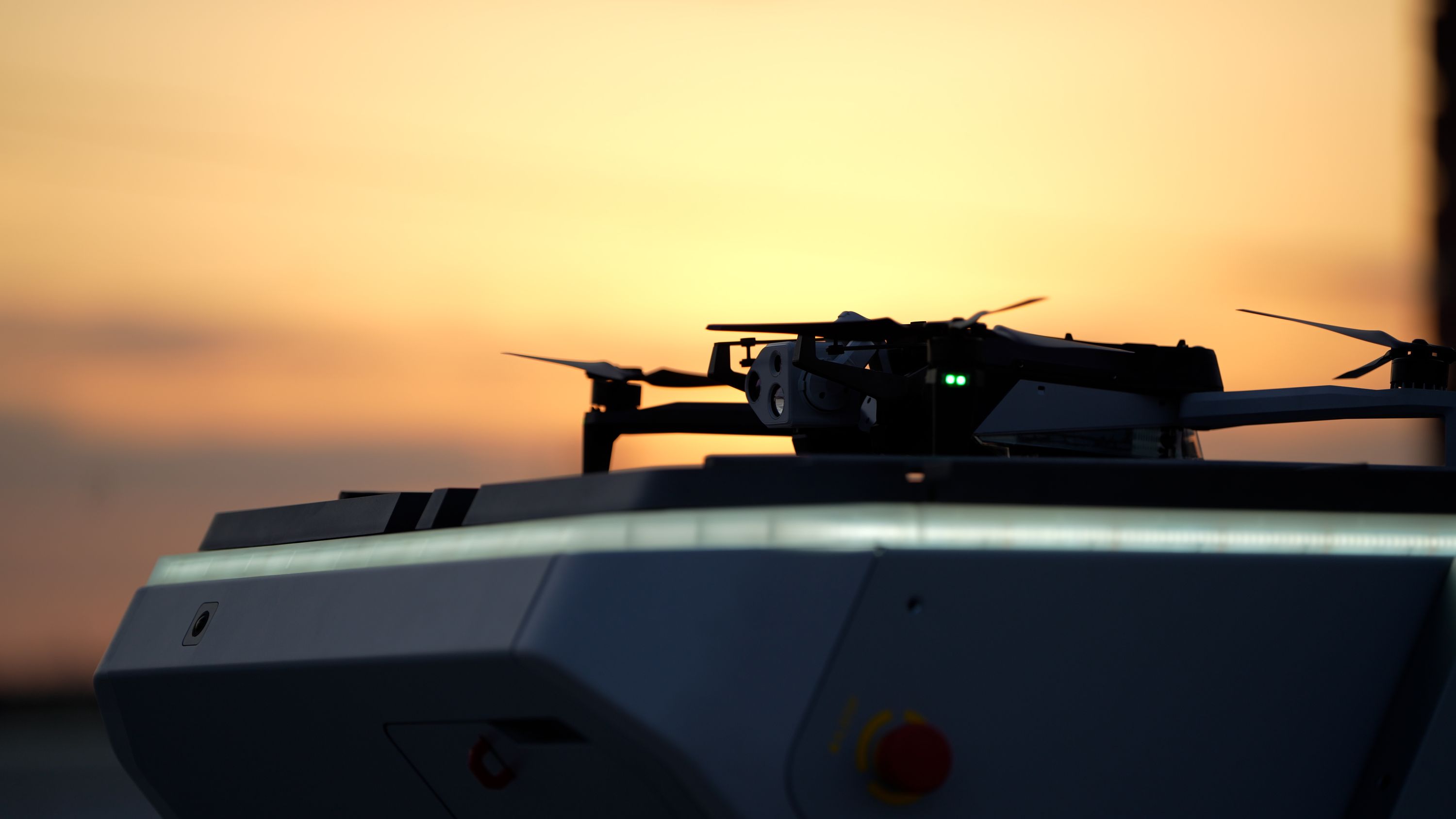How Are Drones Used for Infrastructure Inspection

As our infrastructure continues to age, it becomes increasingly important to find innovative ways to inspect and maintain it. One technology that has been gaining traction in recent years is the use of drones or uncrewed aerial vehicles (UAVs). Drones have the ability to capture high-resolution images and data from hard-to-reach areas, drones are proving to be a valuable tool for infrastructure inspections. From bridges and buildings to power lines and dams, drones are helping to identify potential issues before they become major problems.
Building inspection with drones is becoming an increasingly popular method for conducting infrastructure inspections, as it allows for more efficient and comprehensive assessments of buildings and other structures. In this post, we will explore how drones are being used for infrastructure inspections, the types of drones that are being used, and what the future of drones for infrastructure inspection looks like.
The importance of infrastructure inspection
Infrastructure inspection is the process of examining and evaluating various components of critical infrastructure systems such as roads, bridges, power lines, and buildings to identify potential issues or problems. The primary goal of infrastructure inspection is to ensure that the infrastructure is operating safely, efficiently, and effectively.
Infrastructure inspection involves a range of activities, including visual inspections, asset management, testing, and data collection. The inspections can be conducted manually or through the use of various technologies such as drones, sensors, or robotic systems. During an inspection, various factors such as structural integrity, wear and tear, corrosion, and other potential risks are evaluated.
The results of infrastructure inspections are used to determine the overall condition of the infrastructure, identify areas that require maintenance or repairs, and prioritize maintenance activities. This information is also used to plan for future infrastructure improvements and upgrades to meet the changing needs of communities.
Infrastructure inspections are critical in ensuring that infrastructure systems are functioning at optimal levels and to identify potential safety hazards before they become major issues. Effective inspections help to prevent accidents and ensure that infrastructure systems continue to operate efficiently and effectively, benefiting the safety and well-being of communities.
How are drones used for infrastructure inspection
Professional drone inspections are revolutionizing infrastructure management by providing a more efficient, cost-effective, and safer way to inspect critical infrastructure. Traditional inspections often require shutting down roads, bridges, or other infrastructure for extended periods, which can cause significant disruptions and traffic delays. In contrast, drones can quickly and easily access hard-to-reach areas and provide real-time data without causing major disruptions. Choosing the best drone for building inspections that align with your specific needs is crucial to maximize the benefits of drone inspections.
Using drones for inspections can also significantly reduce costs associated with infrastructure maintenance. Drones are much cheaper than traditional inspection methods, such as rappelling, bucket trucks or scaffolding, and can cover more ground in less time. By using drones, infrastructure managers can detect issues early and address them before they become more expensive problems.
Drone infrastructure inspection is transforming the way we approach maintenance and repair, and is playing a critical role in ensuring the safety and reliability of our infrastructure systems and management. Many infrastructure systems, such as bridges or power lines, are difficult and hazardous to inspect manually. By using drones, workers can avoid dangerous conditions, such as working at heights, near energized equipment or in confined spaces, and minimize the risk of accidents or injuries.

Drone inspections enable infrastructure managers to capture highly detailed data and images that can provide critical insights for maintenance planning, documentation and decision-making. The data collected by drones can be used to create highly accurate 3D models, which can be used to identify structural issues or other potential problems. This information allows asset managers to make more informed decisions about maintenance priorities, budgets, and timelines.
“ “Sundt is using 3D Scan to create incredibly detailed and highly accurate models. We are using Skydio to replace traditional means of 3D modeling that use either manual drones or ground-based inspection, which are highly user-intensive and have high failure rates.”
What drones are used for inspections
Drones are becoming increasingly popular for infrastructure inspections due to their ability to access hard-to-reach areas and capture high-resolution data and images. There are various types of drones that are used for infrastructure inspections, each with its own unique features and capabilities. Here are some of the most common types of drones used for inspections:
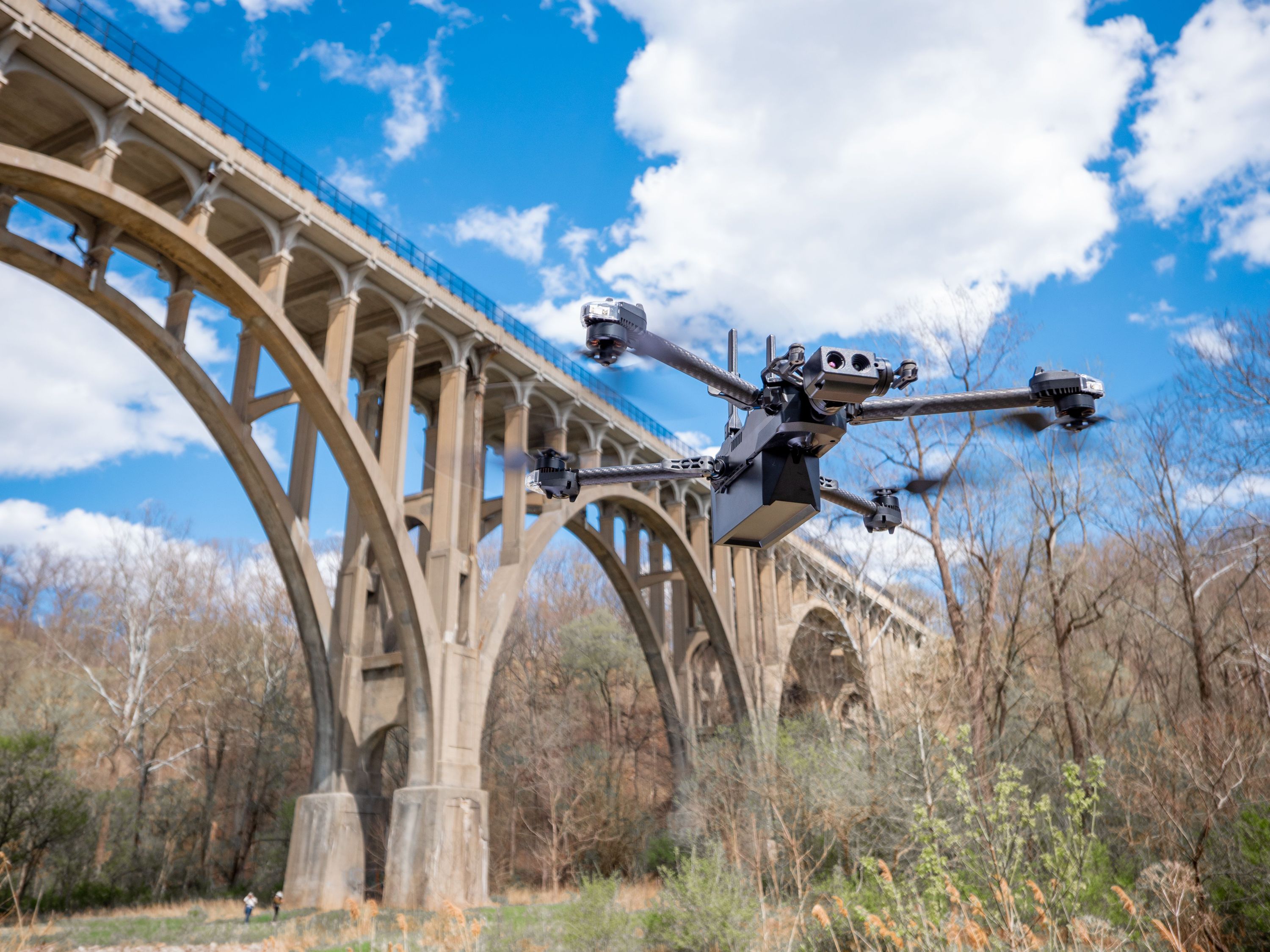
Multirotor drones: These drones are typically used for inspections of buildings, bridges, telecommunication equipment and other structures. They are highly maneuverable and can hover in place, making them ideal for capturing detailed images and videos of hard-to-reach areas. Some of these multirotor drones such as the Skydio X2 have autonomous flight capabilities allowing them to fly and collect data without the need of a pilot.
Fixed-wing drones: Fixed-wing drones are often used for inspections of large area infrastructure systems, such as pipelines or power lines. They can cover long distances quickly and efficiently and can stay in the air for extended periods, allowing them to gather large amounts of data.
Dock-based drones: Docked drones also known as drone-in-a-box solutions are automated drone docking stations, is a specialized piece of hardware designed to support the operations of drones. These systems typically consist of a safe enclosure from the elements, a charging station and a landing pad, which allows drones to take off and land automatically, and recharge their batteries as needed.
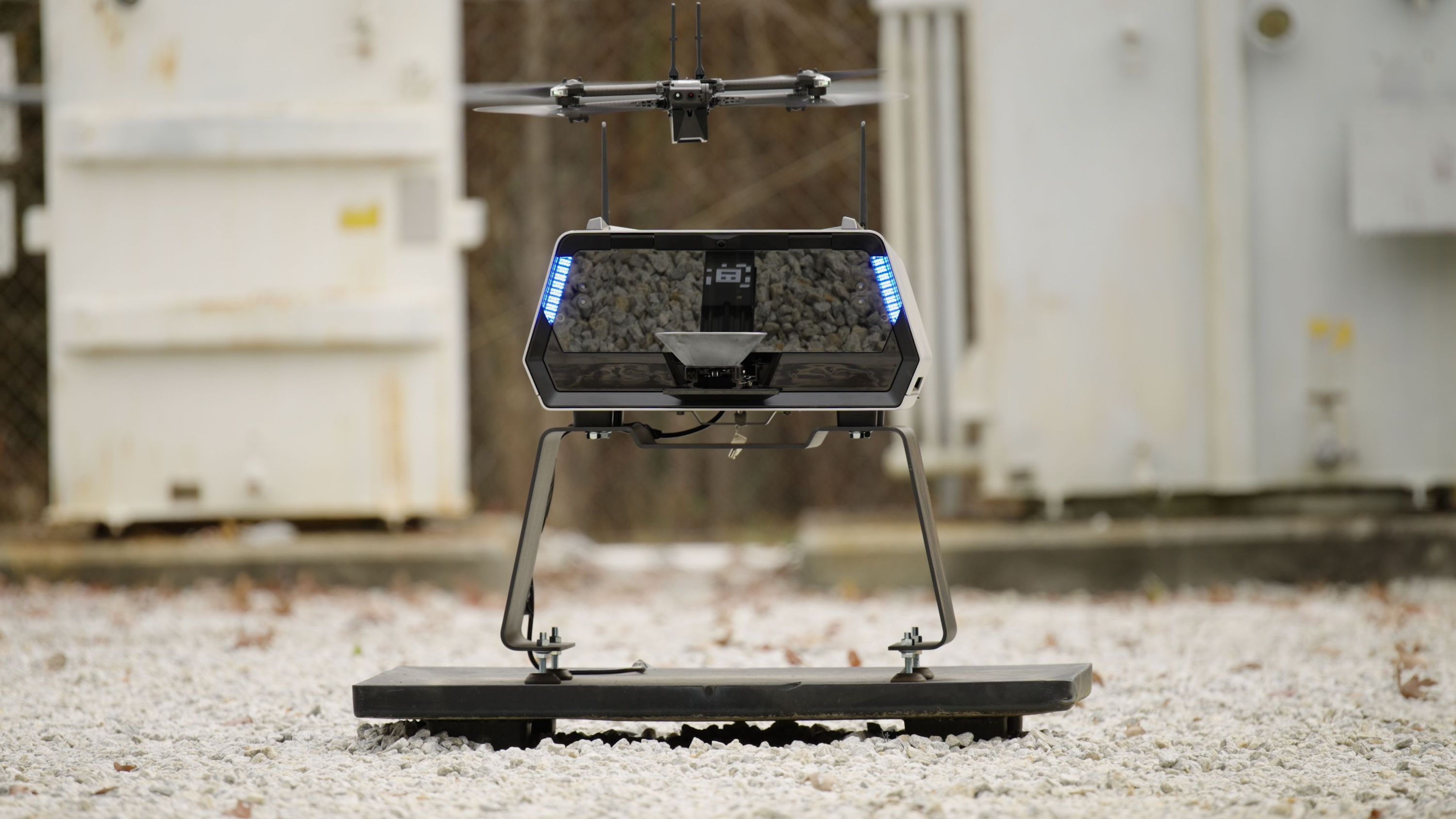
Dock-based drones are designed to support the autonomous operations of drones, allowing them to operate without the need for human intervention. The system can be programmed to automatically launch drones to perform scheduled inspections or respond to an emergency situation. When the drone's mission is complete, it will return to the docking station to recharge its batteries and prepare for its next mission.
“ “The Power Authority is proud to be leading the way in the advanced deployment of automated flight technologies for use in the utility industry. Drones will become an even more valuable tool as we expand our capability to detect infrastructure issues and support our mapping and land management responsibilities. Being able to capture images remotely, regardless of weather conditions or distances, will allow us to track and evaluate our assets more efficiently and safely.”
Dock-based drones are used in a variety of applications, such as infrastructure inspections, the monitoring of construction projects, and for inventory management. By providing a secure and automated platform for drones, dock-based systems can help to reduce the cost of operations, improve safety, and increase the efficiency of drone-based operations. Additionally, by automating the docking process, these systems can help to reduce the risk of human error and ensure that drones are ready to deploy at all times.
Reasons why drones improve infrastructure inspection
Traditional inspection methods can be time-consuming, costly, and often require significant resources. However, the use of drones for infrastructure inspection has revolutionized this process in recent years, providing several benefits over traditional methods.
Access to hard-to-reach areas: Drones equipped with data collection capabilities can access areas that are difficult or impossible for humans to reach, such as rooftops, bridges, and smoke stacks. This allows for more comprehensive inspections and can identify potential issues that might have been missed during traditional inspections.
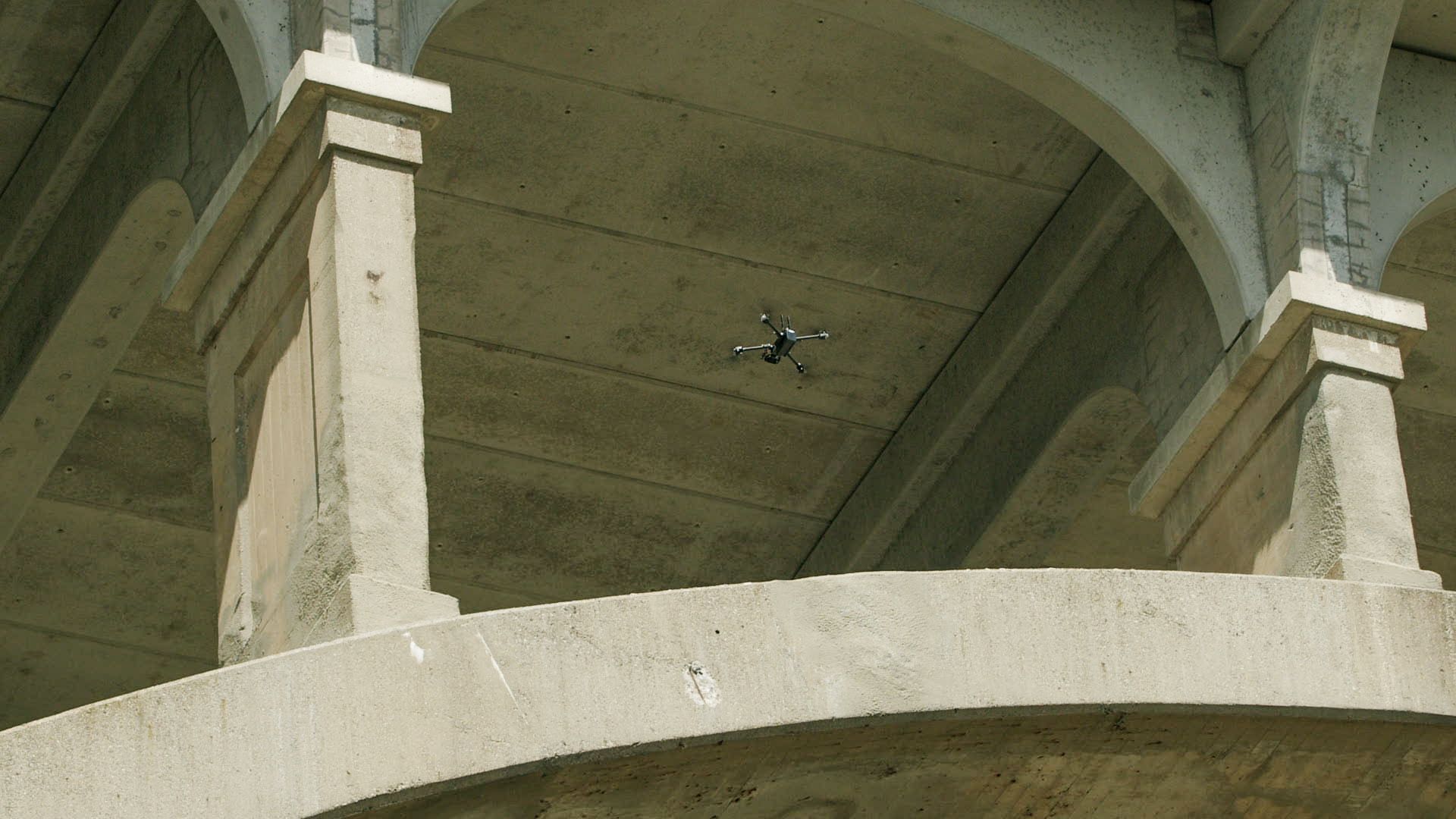
Cost-effective: Using drones for inspections are significantly cheaper than traditional manual inspection methods. Drones can cover large areas quickly and efficiently, reducing the need for large inspection teams and expensive equipment.
Improved safety: Inspecting infrastructure can be dangerous work, especially when working at heights or in confined spaces. Using drones for inspections can reduce the risk of accidents and injuries by allowing inspectors to stay on the ground.
Higher quality data: Drones can capture high-resolution images and videos, which can provide a more detailed and accurate view of the infrastructure being inspected. This data can be used to identify potential issues and plan for maintenance or repairs.
Increased efficiency: Drones can complete inspections in less time than traditional methods, which can help to reduce downtime and increase productivity. This can be especially important in industries where downtime can be costly, such as oil and gas, power generation, and transportation.
“ “The ability to fly and document progress over time is really key, and being able to do that in an autonomous fashion that is repeatable over and over is absolutely huge. We're going to be able to compare changes over time, determine if something was installed correctly, and have that data when we need it.”
Greater inspection frequency: Failing infrastructure is a major concern, and one of the reasons for this is the limited frequency of traditional inspection methods due to the time and cost involved. Drones give the ability to conduct inspections more frequently, allowing for early detection and remediation of small issues before they escalate into bigger problems. By utilizing drones for infrastructure inspection, we can ensure safer and more reliable infrastructure, while also saving time and money.
Overall, drone technology offers several benefits for inspections, including increased safety, efficiency, and cheaper. As the technology continues to improve, we can expect to see even more widespread use of drones for inspections across a range of industries.
The future of drones in infrastructure inspection
Drones have rapidly gained popularity as a tool for infrastructure inspection, making it easier, faster, and safer to assess the condition of structures like buildings, bridges, power generation facilities, and distribution lines. With the drone’s ability to capture high-quality data and images from previously inaccessible locations, drones are revolutionizing the way we inspect and maintain critical infrastructure.
Drone technology is rapidly evolving, and new advancements are being made every day to improve the capabilities of drones for infrastructure inspection. Here are some of the ways in which drone technology is evolving:
Increased range and endurance: New drone models are being developed with longer flight times and increased range, allowing them to cover more ground and stay in the air for longer periods of time. This is particularly useful for large infrastructure projects, such as pipelines and transmission power lines.
Improved sensors and cameras: Drones are being equipped with improved sensors and cameras, including thermal imaging and LiDAR, which can provide more detailed and accurate data for inspections. This can help to identify potential issues that may have been missed during traditional inspections.
Multi-drone missions: In the future, multi-drone missions will become increasingly common as drones continue to advance in their capabilities and become more sophisticated. These missions will involve multiple drones working together to look at various angles of a scene and will be able to coordinate taking pictures and videos of complex structures, such as buildings, bridges, and other large-scale infrastructure.
Artificial intelligence and machine learning: Drones are being integrated with artificial intelligence and machine learning algorithms, allowing them to identify potential issues in structures, such as cracks or corrosion, and alert inspectors to take necessary actions. This will dramatically help to reduce not just the time and effort required for inspections but vastly improve the analysis and identify the action that needs to be taken after each inspection.
Autonomous operation: Drones are being developed with increased autonomy, allowing them to operate without human intervention. This includes automatic takeoff and landing in docks, as well as the ability to navigate complex environments and avoid obstacles.
Cloud-based data management: Drone technology is being integrated with cloud-based data management systems, allowing inspection data to be stored and analyzed remotely. This can help to improve collaboration and decision-making, as well as reduce the need for on-site data storage and management.
Widespread adoption of dock based drones: Dock-based drones are still relatively new and over the coming years this technology will continue to be improved and be implemented across various industries. One of the most promising developments in dock-based drones is the use of artificial intelligence and machine learning algorithms to automate the inspection process. These drones offer several benefits over traditional drones, such as increased autonomy and the ability to be routinely deployed without human intervention.
Integration with ground-based sensing: Future integrations will have software that will analyze data collected from multiple sources, such as ground-based sensors and cameras, to generate highly accurate and detailed reports on the health of the infrastructure.
Overall, the future of dock-based drones in infrastructure inspection is bright, with advancements in AI, machine learning, drone hardware and API integration expected to drive growth and adoption. With the ability to provide safer, repeatable and more efficient inspections, dock-based drones are likely to become a standard tool for maintaining and improving critical infrastructure in the years to come.
Final thoughts
Drone infrastructure inspections are changing the way infrastructure is managed by providing a more efficient, cost-effective, safer, and detailed way of inspecting critical infrastructure. As this technology continues to evolve, we can expect to see even more benefits and opportunities for infrastructure managers to improve safety, efficiency, and reduce cost.
